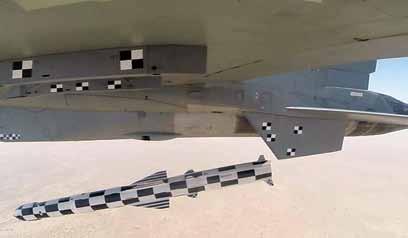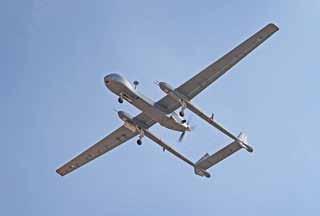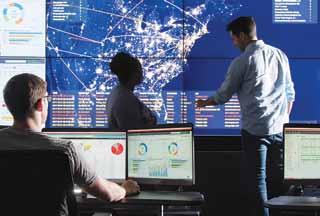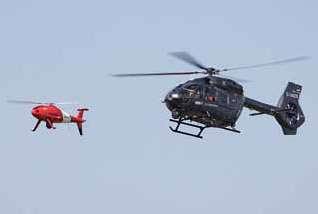
5 minute read
eXcLUSiVe interView neiL hUnter, GLoBaL heaD of BUSineSS DeVeLopment, SchieBeL
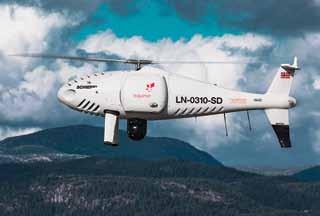
(left) ManneD-unManneDteaMing of s-100; (right)equinor cargo DeliVery in norway using caMcoPter
UavS are perfectly SUited for dUll, dirty and danGeroUS miSSionS
Every year, Schiebel reinvests up to 30 per cent of its profits into the further development of the S-100 to ensure the whole system stays at the forefront of this technology. Also its imporant to note that S-100 is an extremely flexible, multi-role, multi-domain asset. Neil Hunter, Global Head of Business Development, Schiebel gives an overview of Camcopter VTOL UAS and how the Indian Armed Forces can benefit from it.
SP’s ShowNews (SP’s): How did Schiebel come up with the idea of a Camcopter VTOL UAS?
Neil Hunter (Hunter): Schiebel’s major international breakthrough was back in 1991, when the company specialised in state-of-the-art mine detection equipment. The company won a significant contract for its AN-19/2 Mine Detecting Set to become the standard equipment for the US Army. As a consequence, Schiebel built an excellent international reputation for the development and production of quality products for military and counter-mine use.
Starting in 1994, Schiebel began the development of unmanned helicopters. The initial idea was for them to be used for mine detection, carrying Schiebel mine detectors. In early 2000, the CAMCOPTER 5.1 was launched, and following a complete redesign in 2005, as the CAMCOPTER S-100. With the payload capacity to be able to carry high quality day and night cameras, the S-100 quickly established itself as the ideal VTOL platform for ISR tasks. Schiebel achieved its worldwide leading position in the UAS market by winning its first major contract in the UAE a year later.
SP’s: Kindly take us through the evolution of your Camcopter S-100.
Hunter: The CAMCOPTER S-100 is the result of almost 20 years experience in continuously developing and producing UAS. Since 1994, the whole unmanned system has been continuously upgraded with the latest technology. The system is now an operationally proven capability for both military and civil applications. It requires no prepared area or supporting equipment for launch and recovery. It operates day and night, under adverse weather conditions, with a beyond line-ofsight capability out to 200km over land and sea.
The payload capacity is 50kg and it can fit multiple simultaneous sensors and payloads, e.g. MX-10 camera gimbal, cargo box, EO/IR and radars. Almost any capability, within the obvious size and weight constraints, can be integrated on the CAMCOPTER® S-100.
SP’s: What kind of R&D, investment and testing went into the development of the S-100?
Hunter: Every year, Schiebel reinvests up to 30 per cent of its profits into the further development of the S-100 to ensure the whole system stays at the forefront of this technology.
SP’s: What are primary roles and functions for which S-100 UAV is used?
Hunter: The CAMCOPTER S-100 is primarily used for ISR on land and at sea. The UAV can be operated in adverse weather conditions and on small ship decks, which make it ideally suited for maritime operations. The system has also conducted many search and rescue missions, where the S-100 searches and locates objects and if necessary, people at sea. In addition, the S-100 can be fitted with a cargo box or underslung load in order to transport cargo, such as life vests or urgent spare parts for e.g. gas platforms and medical equipment.
SP’s: What is your global footprint now? How many S-100 have been sold to how many customers in how many countries?
Hunter: We have sold 350 AVs so far and have 34 clients worldwide. We are operating all over Europe with the French Navy and the European Maritime Safety Agency in Europe, as well as for the Royal Australian Navy, Thai Navy in the East, and many more.
SP’s: Would you like to share any specific case study with us?
Hunter: Recently, we conducted the world’s first unmanned cargo delivery to an active oil and gas platform in Norway. Please see press release/case study on our company website.
SP’s: In view of constant debate on Manned Versus Unmanned, how would you like to advocate unmanned solutions?
Hunter: Unmanned operations are significantly cheaper than manned flight hours. e.g. when delivering an urgent spare part to an offshore platform it is more cost-effective to use a UAV than a manned helicopter. In addition, flights can be operated almost contactless which is a highly valuable advantage in times of a pandemic. UAVs are perfectly suited for the 3D missions (dull, dirty and dangerous), especially given that there is no pilot in the unmanned helicopter human lives aren’t put in danger.
SP’s: Please tell us more about the LOI 5 that S-100 has achieved.
Hunter: We see a lot of potential in Manned-Unmanned Teaming, where the UAV is controlled and flown by a pilot in a manned helicopter or aircraft. The UAV then acts as the eyes and ears of the manned asset live feeding the information directly to the manned aircraft. In 2018 we successfully conducted a trial with Airbus, where the S-100 was controlled by an H145 helicopter and achieved a level of interoperability (LOI) of 5, meaning the pilot in the H145 was able to launch, operate, command and control the UAV as well as receive all the data (video) back into the manned helicopter.
SP’s: What kind of new-age capabilities can Schiebel offer to Indian Armed Forces?
Hunter: The S-100 is an extremely flexible, multi-role, multi-domain asset. It can be fitted with multiple payloads and sensors depending on the customers needs. The Indian Armed Forces will be particularly interested in our MannedUnmanned Teaming capabilities as well as our suitability to perform either at sea or over the land, carrying multiple and different payloads with a reliability of up to 95 per cent.
Future capabilities/payloads we’re currently working on are: Anti Submarine Warfare (ASW), Light Detection and Ranging (LIDAR), SATCOM C2, Magnetic Anomaly Detector (MAD), and a communications relay.
SP’s: What is the focus of your display at Aero India 2021?
Hunter: We are looking forward to presenting and showcasing our CAMCOPTER® S-100 to the Indian market. Our focus will be to highlight our maritime and land-based operations, showing our experience, pedigree and maturity. We will be emphasizing the fact that the CAMCOPTER® S-100 is a proven UAS with about 100,000 total flight hours, 10,000 maritime flight hours and 2,000 deck landings to date.

